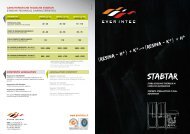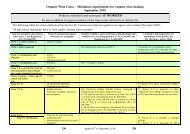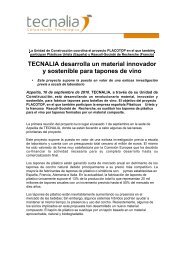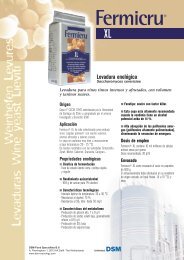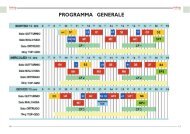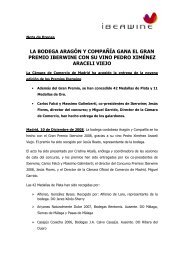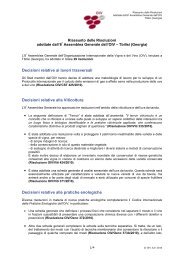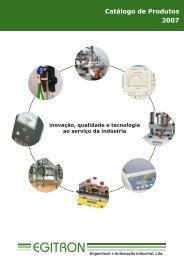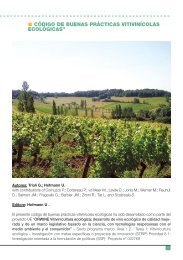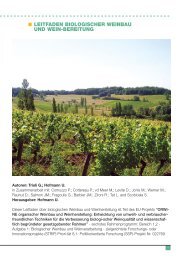Codice di buone pratiche per la viticoltura e l'enologia ... - Infowine
Codice di buone pratiche per la viticoltura e l'enologia ... - Infowine
Codice di buone pratiche per la viticoltura e l'enologia ... - Infowine
You also want an ePaper? Increase the reach of your titles
YUMPU automatically turns print PDFs into web optimized ePapers that Google loves.
Tabel<strong>la</strong> 8: O<strong>per</strong>azioni <strong>pratiche</strong> durante l’i<strong>per</strong>ossigenazione del mosto.<br />
Fase del<strong>la</strong><br />
Vinificazione<br />
190<br />
1. Mosto<br />
proveniente<br />
dal<strong>la</strong> pressa<br />
(senza SO 2<br />
aggiunta)<br />
2. Mosto<br />
i<strong>per</strong>ossigenato<br />
3. Mosto<br />
dopo il travaso<br />
4. Fermentazio<br />
ne<br />
alcolica<br />
Trattamento Rischio<br />
Aggiunta <strong>di</strong> O 2<br />
Aria od ossigeno da<br />
una bombo<strong>la</strong><br />
Utilizzo <strong>di</strong> un <strong>di</strong>ffusore<br />
microporoso<br />
<strong>per</strong> <strong>di</strong>stribuire uniformemente<br />
il gas<br />
all’interno del<strong>la</strong> vasca<br />
Rimontaggio Lasciare che l’aria<br />
prodotta dal<strong>la</strong><br />
pompa gorgogli<br />
all’interno del<strong>la</strong> vasca<br />
La tem<strong>per</strong>atura non dovrebbe essere troppo<br />
bassa (15-20°C) <strong>per</strong> non ridurre troppo <strong>la</strong><br />
velocità delle reazioni <strong>di</strong> ossidazione<br />
Continuare ad apportare ossigeno <strong>per</strong> 1-2<br />
ore, finché il mosto non <strong>di</strong>venta bruno<br />
Travasare il più presto possibile <strong>per</strong> eliminare i composti fenolici<br />
polimerizzati. Eventualmente, utilizzare enzimi pectolitici <strong>per</strong> accelerare<br />
il processo<br />
Inocu<strong>la</strong>re i lieviti selezionati il più presto possibile.<br />
L’utilizzo <strong>di</strong> un’aliquota <strong>di</strong> mosto non se<strong>di</strong>mentato prelevato all’uscita<br />
del<strong>la</strong> pressa (fase 1) può essere utile <strong>per</strong> preparare un pied de cuvée<br />
Aggiungere APA sia durante <strong>la</strong> preparazione che l’aggiunta del pied<br />
de cuvee. Eventualmente una picco<strong>la</strong> quantità <strong>di</strong> ammonio fosfato può<br />
essere aggiunta dopo l’inoculo del pied de cuvée<br />
Nessuno<br />
Sviluppo <strong>di</strong> lieviti<br />
selvaggi<br />
Sviluppo <strong>di</strong> lieviti<br />
selvaggi e <strong>di</strong> azoto<br />
prontamente<br />
assimi<strong>la</strong>bile (APA)<br />
Carenza <strong>di</strong> APA e<br />
fermentazione<br />
alcolica stentata




